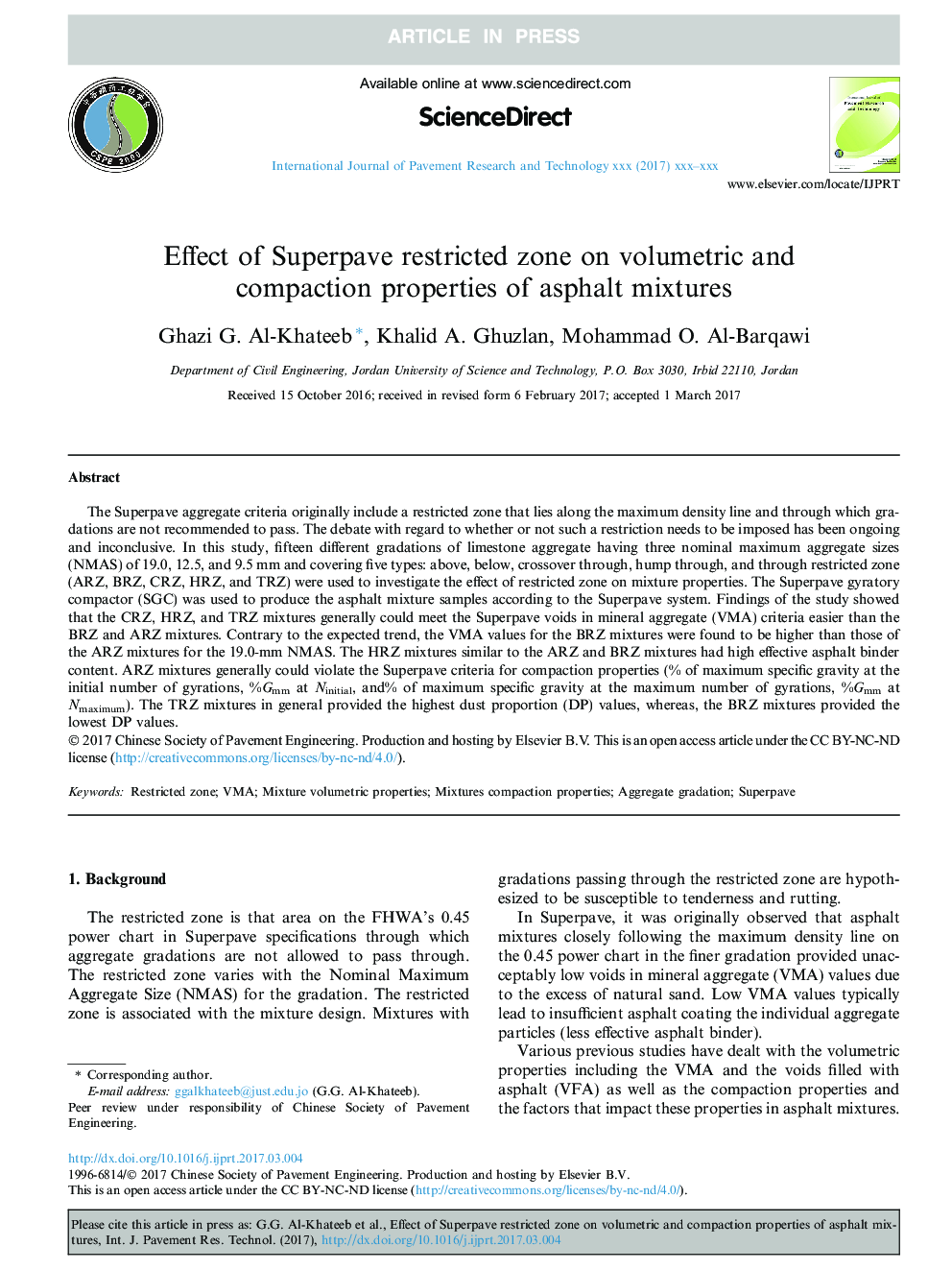| Article ID | Journal | Published Year | Pages | File Type |
|---|---|---|---|---|
| 6747961 | International Journal of Pavement Research and Technology | 2017 | 9 Pages |
Abstract
The Superpave aggregate criteria originally include a restricted zone that lies along the maximum density line and through which gradations are not recommended to pass. The debate with regard to whether or not such a restriction needs to be imposed has been ongoing and inconclusive. In this study, fifteen different gradations of limestone aggregate having three nominal maximum aggregate sizes (NMAS) of 19.0, 12.5, and 9.5Â mm and covering five types: above, below, crossover through, hump through, and through restricted zone (ARZ, BRZ, CRZ, HRZ, and TRZ) were used to investigate the effect of restricted zone on mixture properties. The Superpave gyratory compactor (SGC) was used to produce the asphalt mixture samples according to the Superpave system. Findings of the study showed that the CRZ, HRZ, and TRZ mixtures generally could meet the Superpave voids in mineral aggregate (VMA) criteria easier than the BRZ and ARZ mixtures. Contrary to the expected trend, the VMA values for the BRZ mixtures were found to be higher than those of the ARZ mixtures for the 19.0-mm NMAS. The HRZ mixtures similar to the ARZ and BRZ mixtures had high effective asphalt binder content. ARZ mixtures generally could violate the Superpave criteria for compaction properties (% of maximum specific gravity at the initial number of gyrations, %Gmm at Ninitial, and% of maximum specific gravity at the maximum number of gyrations, %Gmm at Nmaximum). The TRZ mixtures in general provided the highest dust proportion (DP) values, whereas, the BRZ mixtures provided the lowest DP values.
Keywords
Related Topics
Physical Sciences and Engineering
Engineering
Civil and Structural Engineering
Authors
Ghazi G. Al-Khateeb, Khalid A. Ghuzlan, Mohammad O. Al-Barqawi,
